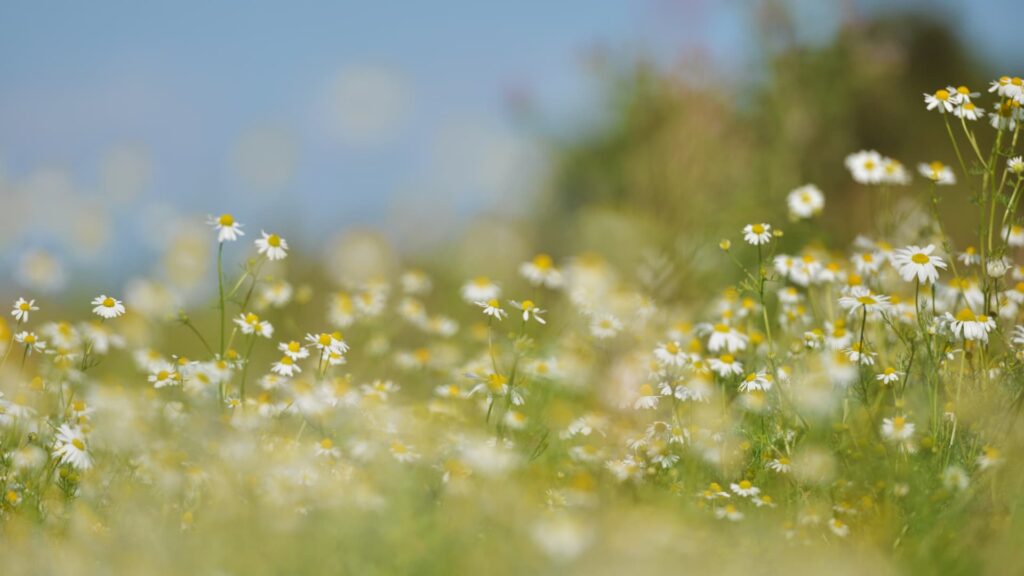If you’ve already been to Newgale Lodge, you’ll have noticed that there’s a portion of our grounds that is devoted to rewilding. If you follow the paths that snake through the long grass, you’ll find buttercups, wild thymes, hairy violets, dwarf thistles, snowdrops, bluebells, and more!
When we first came to Newgale Lodge back in 2017, it needed a lot of work. Since then, the buildings have been renovated and the grounds have been cleaned up. But what may look tidy to us, often isn’t much of a help to local wildlife. Recognising this, we have portioned off a chunk of our land for rewilding purposes.
Our main goal is to attract more birds and to do that, we first need to attract what they like to eat – bugs! Long grass and native wildflowers support not only these little critters but a host of other special insects and animals too. Squirrels, bees, and field mice are all lovers of these protective spaces.
In a world increasingly shaped by human hands, rewilding offers a hopeful path forward that seeks to return landscapes to their natural state and let nature take the lead. Rewilding is about reintroducing species, restoring ecosystems, and allowing natural processes to flourish with minimal human interference.
What Is Rewilding?
Rewilding is an ecological approach focused on reintroducing native species, rebuilding food chains, and reviving ecosystems that have been damaged by development, agriculture, or other forms of land use. The idea is to create self-sustaining environments that can function with as little human management as possible.
Unlike traditional conservation, which often involves preserving what’s left, rewilding aims to restore what’s been lost — whether that’s species like wolves and beavers, or entire forests and wetlands.
Key Elements of Rewilding
1. Species attraction: Our space creates a habitat for beetles, ladybirds, bees, birds and more. The long grass protects insects and, in turn, provides food for birds and smaller mammals like field mice and voles.
2. Habitat Restoration: Rewilding often involves allowing farmland or managed forests to revert to a more natural state. This might mean removing fencing, ceasing chemical use, or stopping activities like logging and grazing.
3. Allowing Natural Processes: Rather than micromanaging nature, rewilding trusts in its ability to regulate itself. Flooding, forest fires, and animal migrations are all seen as natural and necessary forces.
Why Rewild at Newgale Lodge?
Ultimately, we want to do our bit to support the animals and plants that we love in Pembrokeshire. In addition, our rewilding areas make the perfect outdoor spaces for relaxation, reflecting, and enjoying the local wildlife. We want to make your stay memorable, and involve as much of Pembrokeshire in it as we can!
– Biodiversity: By reintroducing missing species and restoring natural habitats, rewilding boosts biodiversity and strengthens ecosystems against threats like climate change and disease.
– Carbon Sequestration: Healthy, wild ecosystems — especially forests, peatlands, and wetlands — are powerful carbon sinks, helping to mitigate the effects of climate change.
– Wellbeing & Recreation: Natural landscapes can offer space for outdoor activities and reconnect people with nature, improving mental health and quality of life.
The Future of Rewilding
As climate and biodiversity crises intensify, rewilding is gaining momentum — not just as a conservation strategy, but as a cultural movement. It invites us to reconsider our relationship with nature, offering a vision of a wilder, more resilient planet.
By giving nature the space and freedom to thrive, rewilding doesn’t just bring back lost species — it revives entire ecosystems and, in some ways, parts of ourselves.

